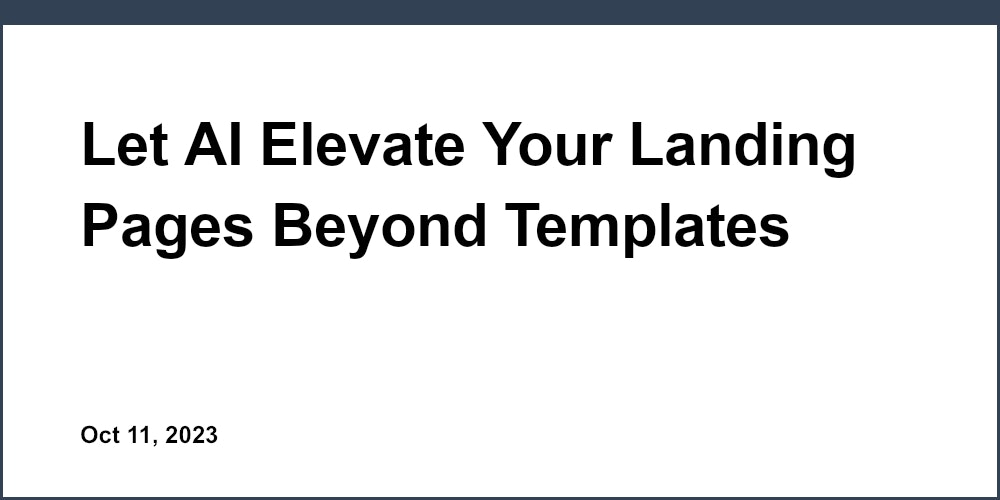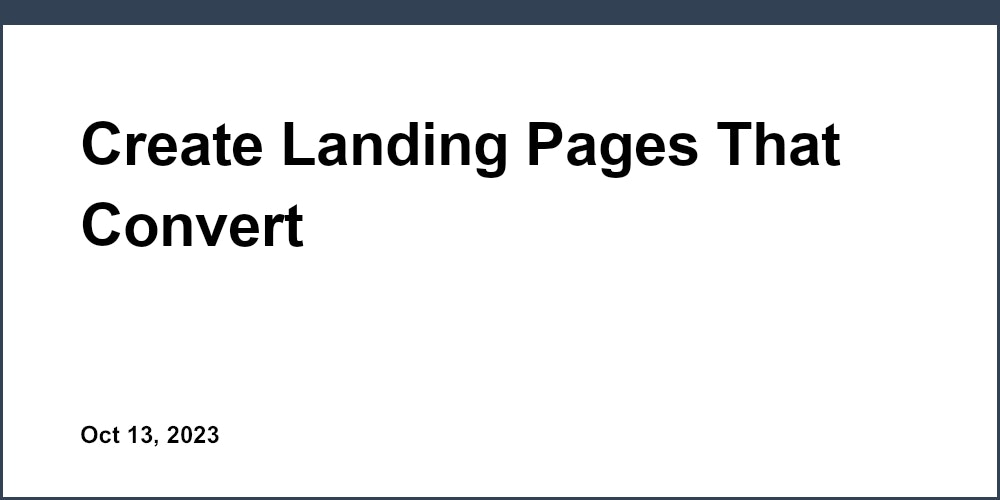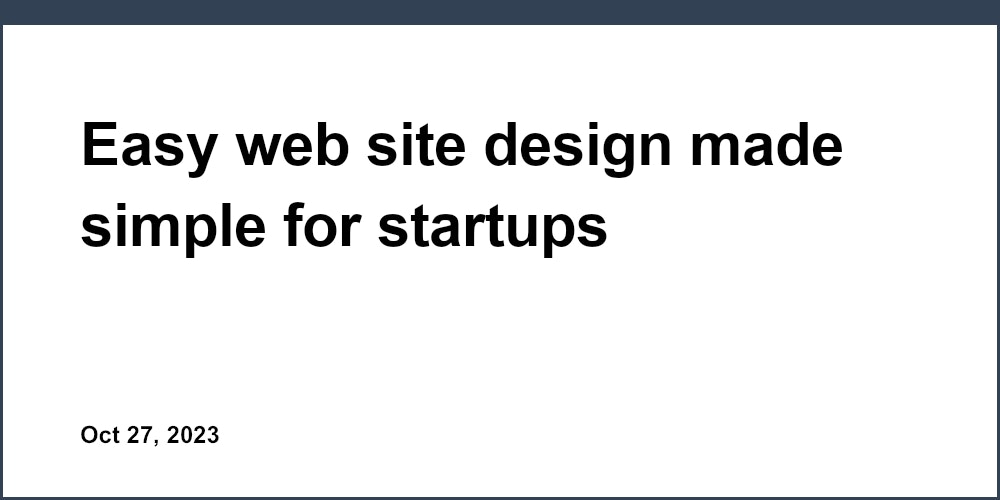Introduction
Creating a website used to require technical skills like coding, but that's no longer the case. With the rise of intuitive no-code website builders, anyone can now start a professional website completely on their own. These user-friendly platforms allow you to build a customized site by dragging and dropping elements into place. No coding is needed!
No-code website builders like Wix, Squarespace, and Unicorn Platform have grown rapidly in popularity over the past few years. They provide an accessible option for entrepreneurs, small business owners, bloggers and more who want an online presence. Building your own site without coding knowledge saves you time and money on development costs. With pre-made templates and easy customization, you can launch a beautiful website that achieves your goals in just a few hours!
In this post, we'll cover everything you need to know to get started creating a website without any coding required. First, we'll go over determining your website needs and goals. Next, we'll compare top no-code website builder platforms and key factors in choosing one. Finally, we'll discuss steps to launch your new website and get found online. Let's dive in!
Determining Your Website Goals and Requirements
Before starting to build your website, it's important to clearly define your goals and requirements. This will guide your platform selection and design choices. Here are key considerations:
-
Purpose - What are you trying to achieve with your website? Common goals include promoting a business, sharing knowledge or showcasing creativity.
-
Essential Pages and Features - Determine the core pages and functionality your site needs. For an online store, you may need product pages, shopping cart and payment processing. A blog needs an attractive homepage, blog page and contact page at minimum.
-
Budget - Research the costs of website builder subscriptions, domain registration, hosting and any add-ons. Plan a realistic budget and timeframe.
-
Timeline - Decide when you want to launch your site and any milestones along the way. Give yourself time to design, add content and test thoroughly.
-
Target Audience - The most important consideration. Optimize your site for their preferences.
Identifying Your Target Audience
Defining your target audience is key for creating valuable, engaging content:
-
Research their demographic data like age, location, gender, income level and other attributes.
-
Analyze psychographic factors like interests, values, motivations, lifestyle, personality traits, preferred content formats and beliefs that impact their worldview and purchasing habits.
-
Understand their main goals, challenges and needs that your website can help address through its content.
-
Determine where else your target audience spends time online, such as social networks, publications or forums. This reveals how to best reach them.
-
With these insights, design your website's aesthetics, content and features to appeal specifically to your audience.
Selecting the Right Content
Carefully choose the information you share on your website based on your goals and audience analysis:
-
Brainstorm the key information that your target audience is seeking which your website can provide through its content. Focus on creating value by educating, informing, entertaining or inspiring your visitors.
-
Prioritize high-quality written content and visual assets that align closely with your website's purpose. Ensure information is easy to consume and relevant to your audience.
-
Include diverse content types like blog posts, ebooks, videos, infographics and more. Variety keeps visitors engaged while suiting different learning styles.
-
Refresh content regularly to give visitors new reasons to return and provide search engines fresh pages to index for SEO.
Choosing Site Features
Evaluate essential website features as well as nice-to-have extras that may appeal to your audience:
-
Determine must-have functionality like contact forms, ecommerce capabilities, booking systems or member logins based on your goals.
-
Explore nice-to-have tools like pop-ups, chatbots or gamification that could boost engagement and conversions.
-
Carefully weigh the costs versus benefits of any advanced features to ensure positive ROI.
-
Confirm all features align closely with your audience needs and website goals to provide an optimized user experience.
-
Prioritize features that drive user engagement, lead generation and sales for the best return on investment.
Comparing No-Code Website Builders
Now that your website goals and target audience needs are clear, it's time to compare website builder options. We'll overview 5 top no-code platforms to evaluate:
-
Pricing - Compare monthly subscriptions, transaction fees for stores and cost of add-ons. Aim for value.
-
Ease of Use - Look for an intuitive drag and drop interface and pre-designed templates.
-
Customization - Review included themes and how easily sites can be customized.
-
Features - Assess built-in tools for forms, analytics, blogging, SEO and ecommerce.
-
Expandability - Check capabilities to integrate apps, add-ons and custom code as you scale.
Let's compare some of the most popular options:
Wix
-
Drag and drop editor with extensive design customization options.
-
500+ designer templates for blogs, stores, portfolios and more.
-
Built-in forms, analytics and ecommerce capabilities.
-
SEO and marketing tools available.
-
Monthly plans start at $14/month.
Squarespace
-
Beautiful templates with easy drag and drop builder.
-
Powerful commerce options and real-time shipping integrations.
-
Scheduling and appointment tools.
-
SEO tools and built-in analytics.
-
Monthly plans starting at $12/month.
WordPress
-
Open source CMS with thousands of themes and plugins.
-
Requires separate web hosting purchase - costs add up.
-
Steeper learning curve than other options.
-
Powerful features and customization capabilities.
-
Self-hosted plans from $5-10/month for hosting.
Unicorn Platform
-
Intuitive drag and drop builder tailored for startups.
-
Modern, mobile-friendly templates designed for SaaS sites.
-
Built-in SEO, analytics, lead gen and marketing tools.
-
Easy integration with sales platforms.
-
Startup friendly pricing from free up to $29/month.
Key Factors When Selecting a Website Builder
With an overview of top website builder options, let's dive deeper into key factors to consider when making your choice:
-
Simplicity - Look for an intuitive drag-and-drop interface with built-in guidance for beginners.
-
Templates - Ensure high-quality, mobile-friendly templates are available for your industry.
-
Pricing - Compare monthly costs and extras needed as you scale.
-
Features - Review built-in tools to maximize value and savings.
-
Customization - Choose a flexible platform as your needs evolve.
-
Support - Check responsiveness and resources for learning the platform.
-
Reviews - Research thoroughly to choose the best fit.
Prioritizing a Simple, Intuitive Interface
Ease of use and the learning curve required are critical factors for no-code site builders:
-
Test the interface thoroughly via free trials and demos before committing.
-
Read reviews and examine the platform's learning resources for beginners.
-
Consider your comfort level with technology when evaluating simplicity.
-
Opt for drag and drop functionality with guidance built-in.
-
Ensure the platform has a gentle learning curve suitable even for total beginners.
Evaluating Quality of Themes and Templates
The included themes and templates must appeal visually while suiting your industry:
-
Browse the template library to find designs fitting your brand style.
-
Test responsiveness on mobile and accessibility features like color contrast and alt text.
-
Review customization options for fonts, colors, layouts and more.
-
Assess visual design and polish of templates to convey professionalism.
-
Consider the number and variety of templates available for unique designs.
Comparing Pricing of Website Builders
Pricing can vary widely, so compare plans thoroughly:
-
Look for a free trial to test drive a platform initially.
-
Review monthly subscription costs. Annual plans may offer discounts.
-
Factor in pricing for add-ons like security, marketing or analytics tools.
-
For ecommerce, compare transaction fees across platforms.
-
Assess what's included in each plan to determine the best value.
Launching Your Website
Once you've selected the ideal website builder for your needs, it's time to launch your site! Here are key steps:
-
Register a domain - Choose a name aligned with your brand and make sure it's available.
-
Select a template - Pick one that resonates with your target audience.
-
Customize the design - Make it your own with colors, fonts and images.
-
Add content - Write compelling pages and blog posts for visitors.
-
Include key features - Embed contact forms, calls-to-action etc.
-
Test thoroughly - Check on mobile, fix bugs and optimize speed.
-
Promote your launch - Spread the word!
Choosing the Right Domain
Your domain name impacts your brand. Consider the following when selecting:
-
Brainstorm keywords and ideas relevant to your offerings.
-
Choose something short, memorable and easy to spell.
-
Stick to .com or extensions matching your location.
-
Use a domain search tool and check availability.
-
Register your domain for 1-2 years initially.
Optimizing for Search Engines
Make your site easy for search engines to index with SEO best practices:
-
Research target keywords and optimize content around them.
-
Write unique meta descriptions for every page.
-
Ensure site architecture and URLs are search engine friendly.
-
Create and submit an XML sitemap in Search Console.
-
Regularly publish fresh content to give search bots more to index.
Promoting Your Launch
Get the word out to start building your audience:
-
Share your launch on social media and email newsletters.
-
Offer promotions or deals to attract visitors.
-
Reach out to relevant influencers about potential partnerships.
-
Analyze site traffic to identify and improve underperforming areas.
Conclusion
Creating a professional quality website is now possible for anyone with the rise of intuitive no-code website builders like Unicorn Platform. By clearly defining your goals and target audience needs, comparing top platforms based on pricing and features, and following the steps outlined to launch your site, you can successfully build an amazing online presence without coding.
Focus on simplicity in your website creation process. Leverage pre-made templates and drag and drop editors to easily customize the design and content. Promote your new website by optimizing for search engines, creating valuable content for visitors, and utilizing social media and email. Follow these tips to quickly launch an engaging website that achieves your online goals. The no-code revolution makes it easier than ever to turn your ideas into reality with a stunning website made entirely by you!



